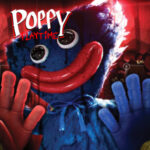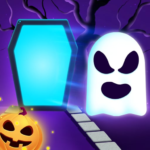Schedule I – A Deep Dive into the Indie Psychological Horror Game Redefining Experimental Narrative
Introduction
Schedule I is an indie psychological horror game that has gained attention for its enigmatic storytelling, cryptic gameplay, and immersive world-building. Developed by a small but passionate team, this game immerses players in a dystopian environment filled with government secrets, identity erasure, and unsettling truths. Unlike traditional horror games focused on jump scares or gore, Schedule I takes a cerebral approach—forcing players to confront psychological tension, fragmented reality, and deeper symbolic meaning. With lo-fi visuals and minimalist sound design, the game crafts an experience that is both disturbing and intellectually engaging. In this article, we’ll explore every aspect of Schedule I—from its themes and mechanics to its pros, cons, and final rating—to understand why it has become a cult phenomenon among fans of experimental and narrative-driven horror games.
The Story Concept Behind Schedule I: Uncovering a Controlled Reality
The narrative of Schedule I places players in an unnamed government facility where reality and identity are distorted through surveillance and psychological manipulation.
You begin with little to no context—awakening in a sterile, clinical environment with nothing but cryptic files, flickering monitors, and surveillance cameras watching your every move. As you explore, the world reveals fragments of its story through documents, visual cues, and audio tapes. These fragments allude to unethical experimentation, control systems, and individuals who have lost their sense of self. Unlike traditional games with clear objectives, Schedule I forces players to make sense of an intentionally fragmented reality. The story is told through implication rather than exposition, requiring active thought and interpretation. This unique narrative structure challenges players to engage deeply with the environment, uncovering the meaning behind what seems like random visual and auditory cues.
Setting and Atmosphere in Schedule I: Building Psychological Tension
Schedule I is set in a single facility that feels both vast and claustrophobic, evoking unease through its sterile aesthetic and oppressive architecture.
Every corridor in the game feels like a dead end, every door like a trap. Fluorescent lights flicker unpredictably, sirens sound off without warning, and messages flash across terminals in cryptic language. The atmosphere is thick with tension, even when no immediate danger is present. This is where Schedule I shines—it doesn't rely on traditional enemies or overt threats but instead builds psychological fear through isolation and ambiguity. The world feels intentionally designed to break your sense of logic. Spatial disorientation, time inconsistencies, and subtle changes in the environment all contribute to the sense of being watched or controlled. You’re not just moving through the world—you’re being manipulated by it, and that subtle horror is more terrifying than any monster could be.
Gameplay Mechanics of Schedule I: Minimalist Design, Maximum Impact
Schedule I embraces minimalist gameplay mechanics, stripping down traditional HUDs and tools to create a raw and immersive experience.
There are no health bars, ammo counters, or objective markers. Players navigate using intuition, environmental cues, and scattered data. The focus is on exploration and discovery, rather than combat or action. Interaction is limited to reading notes, activating terminals, and solving puzzles, but every interaction feels purposeful. This simplicity forces players to slow down and pay attention. You’re not overwhelmed with information; instead, you’re required to piece together the story through logic, pattern recognition, and exploration. While some players may find the lack of traditional mechanics challenging or disorienting, those who enjoy mystery and tension will appreciate the design choice.
Symbolism and Psychological Themes in Schedule I
One of the defining features of Schedule I is its rich use of symbolism and metaphor, especially around themes of control, identity, and paranoia.
The game’s name itself—“Schedule I”—refers to substances classified as having no medical use and a high potential for abuse. This theme of control and institutional labeling runs through every aspect of the game. Rooms labeled with numbers instead of names, characters known only by initials, and recurring images of syringes, cages, and mirrors all suggest a deeper narrative about mental manipulation and loss of self. Mirrors play a critical role, often reflecting distorted images or nothing at all, reinforcing the theme of identity erasure. Surveillance cameras seem to watch your every step, and their placement often reveals deeper meaning about the narrative structure. These themes elevate Schedule I beyond mere horror—it becomes a commentary on institutional power, memory suppression, and the fragility of the human mind.
Audio and Visual Design: Lo-Fi with High Impact
Despite its low-resolution aesthetic, Schedule I uses visual and audio cues masterfully to create a terrifying and immersive world.
The graphics are intentionally lo-fi, reminiscent of early PC games or VHS distortion. This art style enhances the dreamlike and distorted reality the game seeks to portray. Grainy textures, jittery animations, and sudden color shifts disorient the player and blur the line between what’s real and imagined. Audio is equally impactful. Ambient noise, static interference, distorted voices, and droning mechanical sounds layer tension over every step you take. At times, audio cues will contradict what’s visually happening, creating an atmosphere where players can’t trust their senses. This intentional sensory conflict heightens the psychological effect and makes Schedule I uniquely unsettling.
Exploration and Puzzle Design in Schedule I
Exploration is the core of Schedule I’s gameplay loop, supported by puzzle mechanics that are more psychological than logical.
Rather than solving traditional puzzles like moving blocks or decoding ciphers, players must interpret clues based on visual patterns, changes in environment, and narrative hints. For example, a locked room may only become accessible after you've witnessed a seemingly unrelated event in another part of the facility. These mechanics reward patience and attention to detail. Exploration is non-linear; players often double back, re-enter areas, and find new clues in places they previously overlooked. This design encourages deeper immersion and player agency, though it can lead to frustration for those who prefer more guided gameplay.
Community, Lore, and Interpretations of Schedule I
Much of Schedule I’s popularity stems from its mysterious lore, which players have pieced together collaboratively through forums and online communities.
Because the story is fragmented and symbolic, players often share theories about the true meaning behind events. Some believe the game is a metaphor for institutional mental health abuse. Others see it as an allegory for digital surveillance and loss of agency in the age of data. The developers have intentionally left many questions unanswered, encouraging speculation. ARG elements, including hidden codes and files outside the main game, add depth to the lore. This has led to the formation of dedicated fan groups who investigate every line of code, every texture, and every anomaly in search of hidden truths. This level of player engagement extends the game’s lifespan and deepens its cultural impact.
Schedule I’s Role in the Indie Horror Game Landscape
Schedule I is part of a growing trend of indie horror games that prioritize atmosphere, symbolism, and psychological depth over traditional mechanics.
Games like Anatomy, Paratopic, and The Static Speaks My Name have paved the way for this narrative-heavy, minimalist horror. Schedule I stands out for its unique blend of clinical dystopia, abstract storytelling, and emotional unease. The game also reflects a broader shift in the horror genre, where fear is rooted in existential dread rather than supernatural entities. Its lo-fi aesthetic has inspired a new generation of developers to embrace simplicity as a tool for immersion. By rejecting the flashy visuals of AAA horror games, Schedule I proves that minimalism can be more effective at unsettling the human psyche.
Final Verdict and Rating of Schedule I
Schedule I is a bold, unconventional horror experience that challenges players to think deeply and feel unease in ways most games avoid. It’s not about winning or surviving—it’s about observing, interpreting, and slowly unraveling a reality that seems just slightly out of sync. For fans of atmospheric, thought-provoking horror, it offers a truly memorable journey. For those expecting a fast-paced experience or traditional narrative structure, it may feel inaccessible. Still, as a piece of interactive art, Schedule I is a triumph of design, theme, and execution.
Expert Rating: 8.9/10
A haunting, cerebral horror experience that rewards patience and interpretation, but may challenge casual players with its minimalist design.
Conclusion
Schedule I is more than a horror game—it’s a psychological experiment in interactive storytelling. It confronts players with themes of identity, control, and perception in a world where logic is blurred and reality is unreliable. With its rich symbolism, lo-fi aesthetic, and immersive audio design, it carves out a unique space in the indie horror genre. While not without its frustrations, the experience it offers is unlike anything in mainstream gaming. For those willing to step into the unknown and piece together meaning from fragments, Schedule I is not just a game—it’s a mind-bending descent into the shadows of the self.































